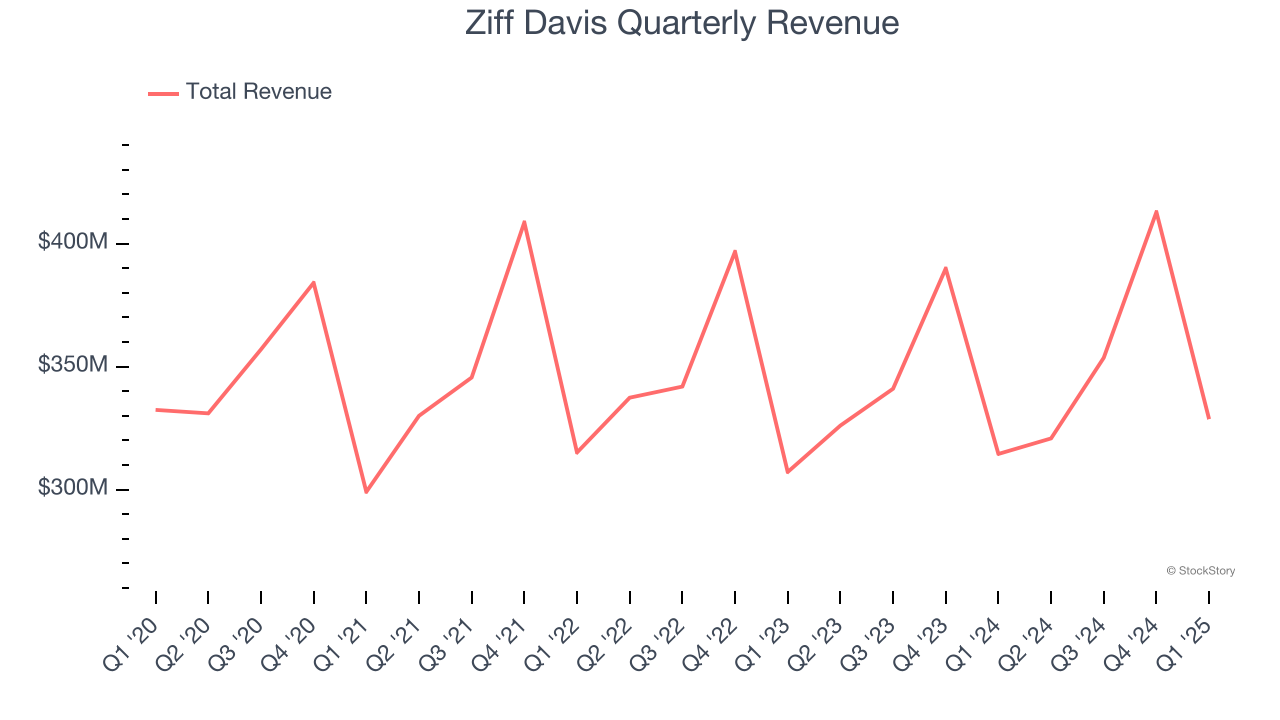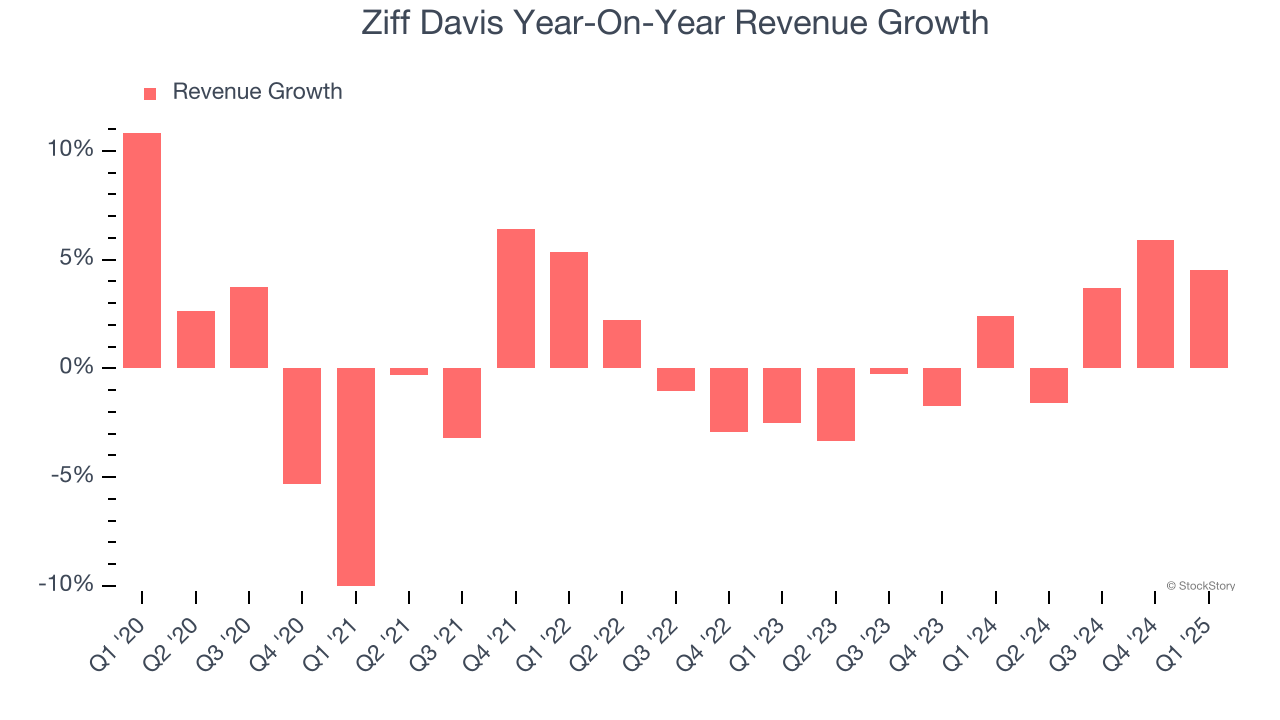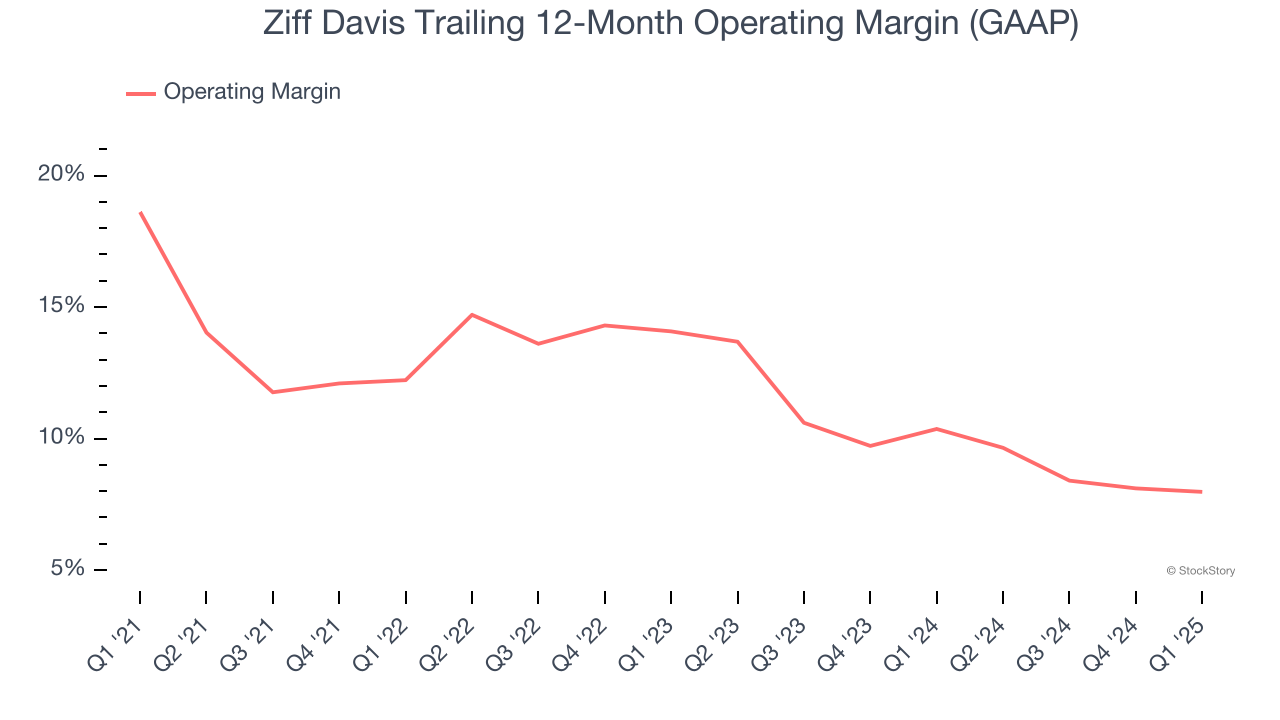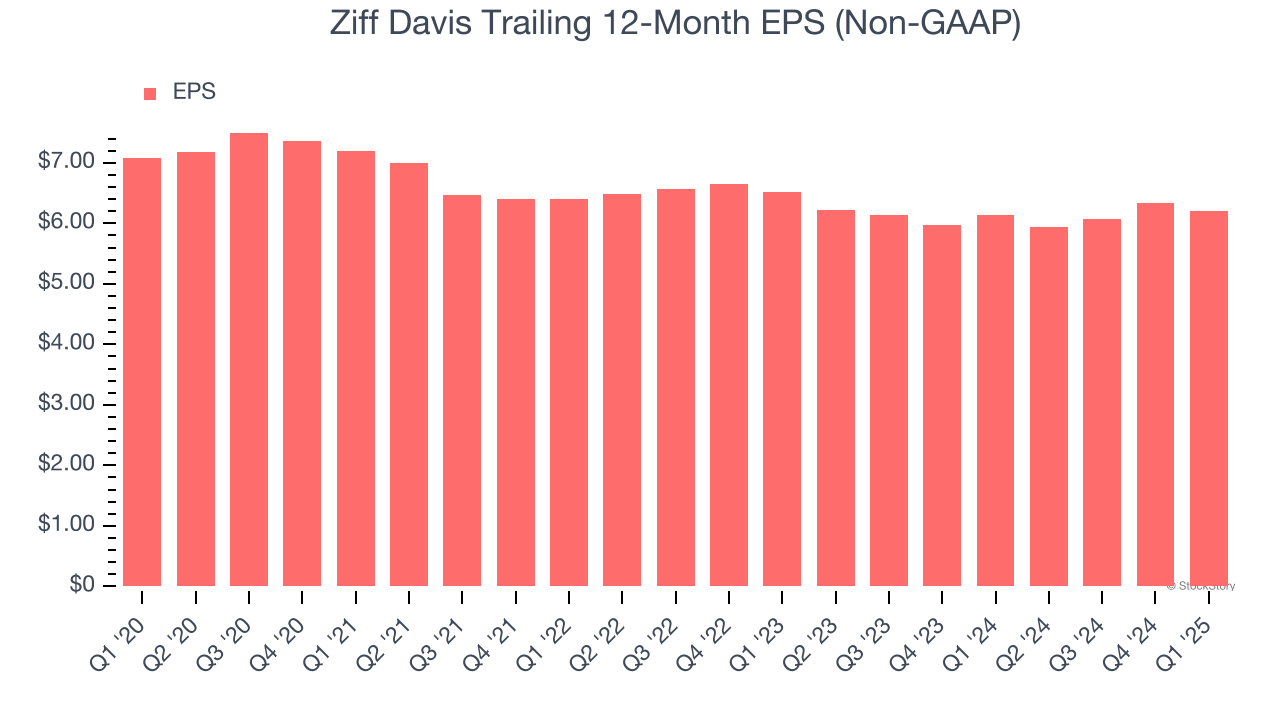
Digital media company Ziff Davis (NASDAQ:ZD) beat Wall Street’s revenue expectations in Q1 CY2025, with sales up 4.5% year on year to $328.6 million. The company’s full-year revenue guidance of $1.47 billion at the midpoint came in 0.9% above analysts’ estimates. Its non-GAAP profit of $1.14 per share was 8.5% below analysts’ consensus estimates.
Is now the time to buy Ziff Davis? Find out by accessing our full research report, it’s free.
Ziff Davis (ZD) Q1 CY2025 Highlights:
- Revenue: $328.6 million vs analyst estimates of $324 million (4.5% year-on-year growth, 1.4% beat)
- Adjusted EPS: $1.14 vs analyst expectations of $1.25 (8.5% miss)
- Adjusted EBITDA: $100.7 million vs analyst estimates of $100.1 million (30.6% margin, 0.6% beat)
- The company reconfirmed its revenue guidance for the full year of $1.47 billion at the midpoint
- Management reiterated its full-year Adjusted EPS guidance of $6.96 at the midpoint
- EBITDA guidance for the full year is $523.5 million at the midpoint, above analyst estimates of $518.6 million
- Operating Margin: 10.7%, in line with the same quarter last year
- Free Cash Flow was -$5.01 million, down from $47.43 million in the same quarter last year
- Market Capitalization: $1.39 billion
“We are pleased with our overall first quarter performance, which surpassed our internal targets,” said Vivek Shah, Chief Executive Officer of Ziff Davis.
Company Overview
Originally a pioneering technology publisher founded in 1927 that became famous for PC Magazine, Ziff Davis (NASDAQ:ZD) operates a portfolio of digital media brands and subscription services across technology, shopping, gaming, healthcare, and cybersecurity markets.
Sales Growth
A company’s long-term sales performance can indicate its overall quality. Even a bad business can shine for one or two quarters, but a top-tier one grows for years.
With $1.42 billion in revenue over the past 12 months, Ziff Davis is a small player in the business services space, which sometimes brings disadvantages compared to larger competitors benefiting from economies of scale and numerous distribution channels.
As you can see below, Ziff Davis struggled to increase demand as its $1.42 billion of sales for the trailing 12 months was close to its revenue five years ago. This shows demand was soft, a tough starting point for our analysis.

We at StockStory place the most emphasis on long-term growth, but within business services, a half-decade historical view may miss recent innovations or disruptive industry trends. Ziff Davis’s annualized revenue growth of 1.2% over the last two years is above its five-year trend, but we were still disappointed by the results. 
This quarter, Ziff Davis reported modest year-on-year revenue growth of 4.5% but beat Wall Street’s estimates by 1.4%.
Looking ahead, sell-side analysts expect revenue to grow 3.7% over the next 12 months. While this projection indicates its newer products and services will spur better top-line performance, it is still below average for the sector.
Today’s young investors won’t have read the timeless lessons in Gorilla Game: Picking Winners In High Technology because it was written more than 20 years ago when Microsoft and Apple were first establishing their supremacy. But if we apply the same principles, then enterprise software stocks leveraging their own generative AI capabilities may well be the Gorillas of the future. So, in that spirit, we are excited to present our Special Free Report on a profitable, fast-growing enterprise software stock that is already riding the automation wave and looking to catch the generative AI next.
Operating Margin
Operating margin is a key measure of profitability. Think of it as net income - the bottom line - excluding the impact of taxes and interest on debt, which are less connected to business fundamentals.
Ziff Davis has managed its cost base well over the last five years. It demonstrated solid profitability for a business services business, producing an average operating margin of 12.6%.
Analyzing the trend in its profitability, Ziff Davis’s operating margin decreased by 10.6 percentage points over the last five years. Even though its historical margin was healthy, shareholders will want to see Ziff Davis become more profitable in the future.

In Q1, Ziff Davis generated an operating profit margin of 10.7%, in line with the same quarter last year. This indicates the company’s overall cost structure has been relatively stable.
Earnings Per Share
We track the long-term change in earnings per share (EPS) for the same reason as long-term revenue growth. Compared to revenue, however, EPS highlights whether a company’s growth is profitable.
Sadly for Ziff Davis, its EPS declined by 2.6% annually over the last five years while its revenue was flat. This tells us the company struggled because its fixed cost base made it difficult to adjust to choppy demand.

Diving into the nuances of Ziff Davis’s earnings can give us a better understanding of its performance. As we mentioned earlier, Ziff Davis’s operating margin was flat this quarter but declined by 10.6 percentage points over the last five years. This was the most relevant factor (aside from the revenue impact) behind its lower earnings; taxes and interest expenses can also affect EPS but don’t tell us as much about a company’s fundamentals.
In Q1, Ziff Davis reported EPS at $1.14, down from $1.27 in the same quarter last year. This print missed analysts’ estimates. Over the next 12 months, Wall Street expects Ziff Davis’s full-year EPS of $6.20 to grow 15.4%.
Key Takeaways from Ziff Davis’s Q1 Results
It was good to see Ziff Davis narrowly top analysts’ revenue and EBITDA expectations this quarter. We were also glad its full-year revenue and EBITDA guidance exceeded Wall Street’s estimates. On the other hand, its EPS missed significantly. Overall, this quarter could was solid. The stock traded up 3.1% to $33.35 immediately after reporting.
Is Ziff Davis an attractive investment opportunity at the current price? We think that the latest quarter is only one piece of the longer-term business quality puzzle. Quality, when combined with valuation, can help determine if the stock is a buy. We cover that in our actionable full research report which you can read here, it’s free.
